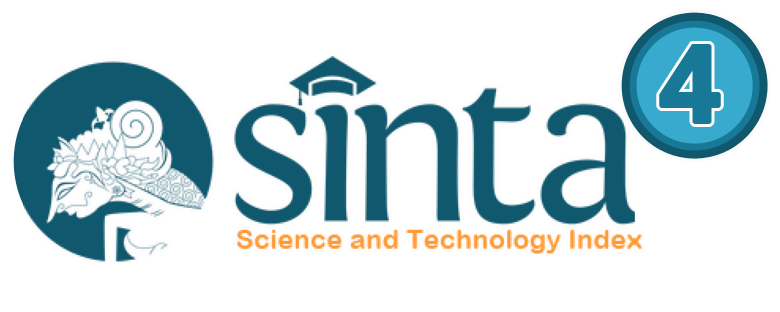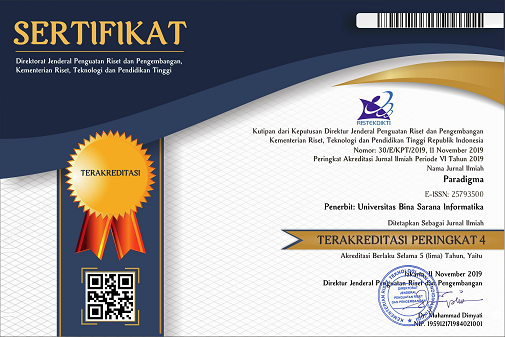PERANCANGAN SISTEM INFORMASI DATA GURU MENGGUNAKAN PENDEKATAN USER CENTERED DESIGN
Abstract
Administration information system is a system used to process data and process data master administration activities involving between teachers, administration pembimas Catholics and other staffing attribute data. Information systems administration data administration process activities teacher teachers do good teachers data processing concerning the completeness of documents, certifying teachers, retirement, and history of teacher education in the daily administrative operations of the Catholic teacher pembimas. The utilization of information technology in the Ministry of religion, especially in the Catholic religion teacher data processing this is indispensable in order for the management of the whole area of Jakarta teacher data is more effective and efficient. One of the areas that need to be handled more carefully is the teacher data region DKI Jakarta. Management in the field of Administration will be more effective and efficient use of technology helped by having the information, i.e. by using the Administration information systems Gurus. Based on preliminary interviews with the employees Pembimas Catholic writer Regional Ministry of Religious Province DKI Jakarta teachers, data processing was done with Microsoft Excel and Microsoft Word. The purpose of this research is to design and build information systems data processing administrative teachers to facilitate users in the process data master, see to what extent the application of User Centered Design approach on the application administration teacher who built, finding the limitations that exist on the application administration of teachers, especially in terms of existing concepts in User Centered Design and provide recommendations of design teacher-based administration application is multi-user. Test results and analysis to resolve the problems relating to the processing of data administration teacher, this system makes the data become more integrated, so that redundancies can be avoided and the data to be more accurate.
Full Text:
PDFReferences
Andrews, K. (2009). Human-Computer Interaction. Graz: Graz University of Technology.
Cooper, R. a. (2007). About Face 3 : The Essentials of Interaction Design. Wiley.
Henry, P. (2004). User Centered Information Design for improved software usability, Artech House.
Kadir, A & Triwahyuni, T. Ch. (2003). Pengenalan Teknologi Informasi (2nd ed). Yogyakarta: Andi.
Mc Leod, J. R. (2001). Sistem Informasi Manajemen. PT Prenhallindo.
McCracken, G. (1988). The Long Interview (Qualitative Research Methods) . California: Sage Publications, Inc .
Moleong, L. (2007). Metode Penelitian Kualitatif. Bandung: Remaja Rosdakarya.
Norman, D. (1992). The Design of Everyday Things ; BasicBooks.
Paryati dan Murya, 2008. Sistem Informasi, Yogyakarta: Ardana Media.
Pressman, R. S. (2001). Software Engineering : A Practitioner's Approach.5th Ed. Ney York: McGraw-Hill.
Pressman, R. S. (2005). Software Engineering A Practitioner’s approach. 6th Edition. . McGraw-Hill.
Rauterberg, M. (2000). Introduction into Human-Computer Interaction. Zürich : Swiss Federal Institute of Technology.
Shneiderman, B. (2000). Designing the user interface. 3rd edition. Wokingham: Addison Wesley.
Shneiderman, B. (2000). Sparks of innovation in human-computer interaction. Ney Jersey: Alex Publishing Corporation.
Sutopo, H. (2006). Metode Penelitian Kualitatif : Dasar Teori dan Terapannya dalam Penelitian. Edisi 2. Surakarta: Universitas Sebelas Maret.
Utomo, B. K. (2010). Perancangan Sistem Informasi Bank Darah Hidup Untuk Mempercepat Penyediaan Calon Penyumbang Darah Dengan Ketepatan Yang Tinggi (Studi di PMI Kota Samarinda). Jurnal Informatika Mulayarman,6, 22-28, Juli 2,2010.
DOI: https://doi.org/10.31294/p.v16i1.709
Copyright (c) 2016 Ady Kusnanjaya

This work is licensed under a Creative Commons Attribution-ShareAlike 4.0 International License.








